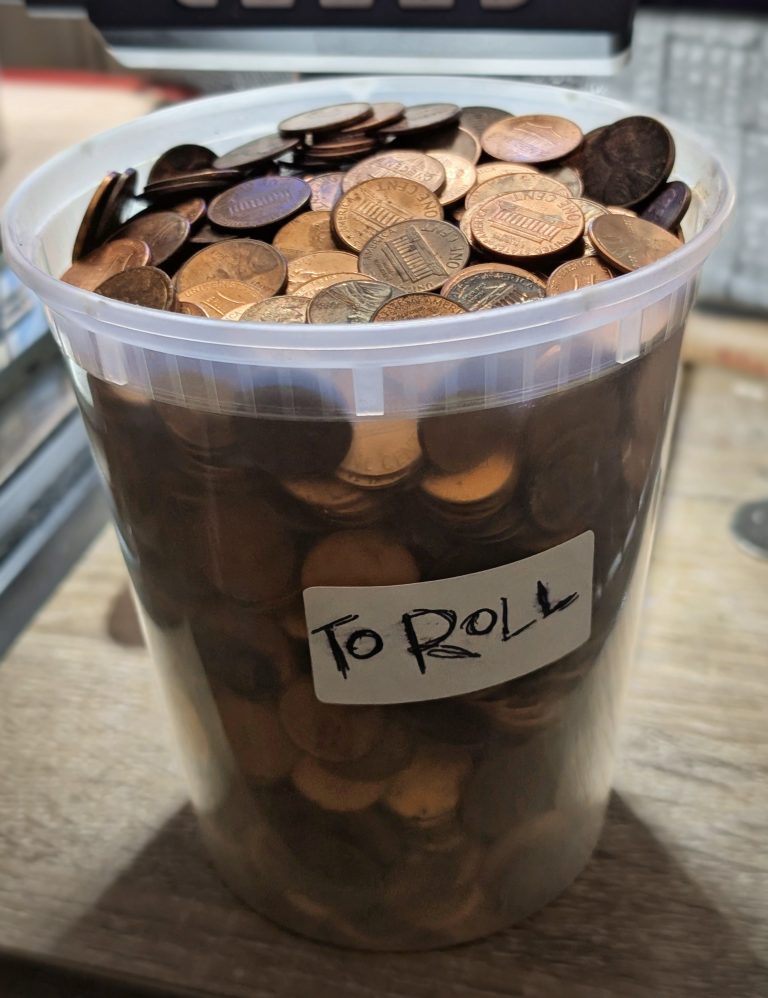What Counts as Environmental Damage?
If you’ve ever submitted a coin for grading and gotten the dreaded Environmental Damage tag back from PCGS, you know how frustrating it can be. Unlike more specific designations like “Cleaned” or “Scratched,” this one feels like a catch-all, but there’s a little more to it than that.
This post breaks down exactly what PCGS means when they use the term. It’s not just about dirt or a little discoloration. Environmental damage is a details-grade condition caused by the coin’s surroundings, not the minting process or regular circulation. And once you know what they’re looking for, it’s easier to avoid surprises.
Let’s dig into the different forms of damage that fall under this label.
Common Types of Environmental Damage
Environmental damage isn’t always obvious and sometimes it overlaps with things like corrosion or toning. But when a grading service like PCGS makes the call, it’s usually because one or more of the following conditions are present:
1. Ground Exposure
Coins buried in soil for long periods tend to absorb minerals, moisture, and acids from the earth. That leads to spotting, heavy discoloration, or crusty buildup that even conservation can’t reverse.
2. Water Damage
Freshwater, saltwater, or high humidity can all do long-term damage. This includes shipwreck finds, improperly stored coins in basements or garages, or coins caught in flooding. In severe cases, water exposure leads to corrosion, pitting, or layered discoloration.
3. Fire or Heat Damage
Burnt or heat-tarnished coins often display unnatural color changes or a warped surface. Even if the coin isn’t charred, PCGS may call it environmental damage if the heat altered the metal.
4. Chemical Exposure
This is where things get tricky. If a coin shows signs of long-term exposure to cleaning agents, acidic paper envelopes, or even certain PVC-containing flips, the damage can fall under this label. The key factor is that it didn’t happen at the mint or during regular handling.
5. Long-Term Storage in Problematic Environments
Coins stored in damp, musty, or reactive containers, like coin albums with sulfur or acidic paper, can slowly develop signs of damage. This may include haze, streaking, or surface instability.
Verdigris
(noun)
A green or bluish deposit that forms on copper or bronze due to exposure to air and moisture. While it might look interesting, verdigris is a sign of active corrosion, not toning, and it can spread if left untreated. It’s common on older copper coins stored in damp conditions or flips containing PVC.
How to Spot Environmental Damage on a Coin
Environmental damage doesn’t always jump out right away, especially to newer collectors. It’s not a specific type of damage, but rather a blanket term used when a coin’s surface has been altered by its surroundings in a way that goes beyond normal wear or aging.
Here are some red flags that a coin might have environmental damage:
- Irregular surface texture – Raised, crusty, pitted, or porous areas that don’t match the metal’s expected smoothness.
- Discoloration – Blotchy greens, blacks, or oranges, often appearing in patches rather than smooth transitions like toning.
- Staining – Sometimes coins that sat in soil or reacted with chemicals will have deep-set stains or spotting that won’t come off with gentle rinsing.
- Unnatural shine – Especially on coins that have been buried or improperly stored, you’ll occasionally see a strange combo of shine and damage that doesn’t feel right.
You’ll often need to rotate the coin under light and look closely at the fields and devices. If you spot something suspicious, it’s worth checking if the damage might be from environmental causes. Especially if it’s paired with PVC residue, corrosion, or other surface changes.
How It Affects Value – and When It Might Look Cool Anyway
Most of the time, environmental damage knocks a coin’s value down significantly. PCGS and other top-tier grading companies will slap a Details grade on the holder, and serious collectors tend to avoid those unless the coin is rare enough to overlook the damage.
But there’s an exception: sometimes, the results of environmental damage are visually striking.
You’ll occasionally see:
- Deep rainbow-like swirls caused by long-term chemical exposure.
- Coins with a cracked desert patina from years in arid conditions.
- Unintentional but eye-catching color shifts that resemble toning, just without the same predictability.
Collectors may still label these as damaged, but there’s a growing group who enjoy coins like these for their uniqueness. They’re usually not investment pieces, but they can be conversation starters or album filler coins with personality.
Just know that even when a coin looks “cool,” it’s still not going to straight-grade. If you’re okay with that, then lean in.
Final Thoughts
Environmental damage can be frustrating, especially when it ruins a coin that was otherwise in decent shape. Whether it came from a metal detector, a forgotten jar, or the ground itself, the outcome is the same. Once the surface is compromised, it’s almost always a Details coin.
That said, these coins still have a place in the hobby. They can be affordable entry points for new collectors, placeholders in albums, or just fascinating examples of what time and the elements can do.
As with all condition issues, the key is understanding what you’re looking at and buying (or selling) with full awareness. Know the risks, know the limitations and you’ll be fine.
Geoff runs Genuine Cents, a straight talking coin education project built from hands-on experience and hundreds of hours examining coins. He is an ANA member and writes practical guides for new and returning collectors who want clarity instead of hype. If you want to reach him, message him on Instagram at @GenuineCents.

